Food Chopper vs. Food Processor: Which Kitchen Tool is Right for You
 2025.11.06
2025.11.06
 News
News
Introduction
In today’s modern kitchen, efficiency is everything — especially when it comes to food preparation. Whether you’re chopping vegetables for a quick salsa or kneading dough for homemade bread, the right kitchen tool can make all the difference. Two of the most popular small appliances for food prep are the food chopper and the food processor.
At first glance, they may look similar — both can cut, blend, and mix ingredients — but their functions, capacity, and versatility set them apart. Choosing between a food chopper vs. food processor depends on your cooking habits, kitchen space, and the types of dishes you prepare most often.
What is a Food Chopper?
A food chopper is one of the most practical and efficient kitchen tools you can have for quick and easy food preparation. It’s designed to do exactly what its name implies — chop food. Whether you’re dicing onions, mincing garlic, or crushing nuts for your favorite dessert, a food chopper makes the process faster, cleaner, and more consistent than doing it by hand.
At its core, a food chopper consists of a bowl, a set of sharp stainless-steel blades, and a lid that activates the chopping motion. Depending on the model, this motion may be powered manually or electrically. Unlike larger appliances, a food chopper is compact and straightforward, focusing on speed and simplicity rather than multi-function versatility.
If you often find yourself doing small prep jobs — like cutting vegetables for a salad, making fresh salsa, or blending herbs for pesto — a food chopper can be your best kitchen companion.
Definition and Basic Function
A food chopper is a small kitchen appliance used to chop, mince, or dice ingredients into uniform pieces. Its main function is to simplify repetitive knife work. You place the ingredients inside the bowl, secure the lid, and either press, pull, or push a button (depending on whether it’s a manual or electric model) to activate the blades.
The result? Evenly chopped ingredients in just a few seconds — no tears from onions, no mess on the cutting board, and no fatigue from manual chopping.
While the design is minimal, the results are remarkably efficient. Most food choppers can handle a variety of ingredients including vegetables, fruits, nuts, herbs, cheese, and even small quantities of meat or cooked ingredients. Some models can also be used to make simple purees or coarse pastes, such as salsa, pesto, or hummus.
Common Uses of a Food Chopper
A food chopper is a time-saver for countless everyday kitchen tasks. Here are some of the most common ways people use them:
- Chopping Vegetables: Perfect for quickly cutting onions, carrots, peppers, or tomatoes into small, even pieces.
- Mincing Herbs: Easily chop parsley, cilantro, basil, and other herbs without bruising them.
- Crushing Nuts: Great for chopping almonds, walnuts, or peanuts for desserts and baking.
- Making Salsa and Pesto: Combine tomatoes, onions, and cilantro for salsa, or blend basil, garlic, and pine nuts for fresh pesto.
- Preparing Ingredients for Soups or Salads: Pre-chop ingredients for faster meal assembly.
- Quick Snack Prep: Make toppings for tacos, bruschetta, or dips in just minutes.
Essentially, the food chopper is your go-to tool for small to medium chopping tasks where you need consistency without the hassle of a larger appliance.
Types of Food Choppers
Not all food choppers are created equal. They come in several types, each catering to different needs and preferences. The main categories include manual, electric, pull-string, and mini food choppers.
Manual Food Chopper
A manual food chopper operates without electricity. You either press down on the lid, push a plunger, or use a pull-cord mechanism to spin the blades. Manual models are popular for their simplicity and portability — ideal for small kitchens, camping trips, or quick prep tasks.
Pros:
- Doesn’t require power.
- Compact and easy to clean.
- More affordable than electric models.
Cons:
- Requires some manual effort.
- Limited in capacity and chopping consistency for harder ingredients.
Electric Food Chopper
An electric food chopper automates the process, using a small motor to power the blades. You simply load the bowl, attach the lid, and press a button. These models are faster and more consistent than manual ones.
Pros:
- Convenient and efficient.
- Delivers consistent results.
- Can handle slightly larger batches than manual types.
Cons:
- Requires electricity.
- Slightly more expensive and has more parts to clean.
Pull-String Choppers
Pull-string choppers are a hybrid design. They work manually but use a pull-cord mechanism (similar to a lawn mower starter) that spins the blades rapidly. This gives you greater control over chopping texture — a few pulls for coarse cuts, more pulls for finer results.
Pros:
- Quick and easy to control.
- Doesn’t need electricity.
- Great for small tasks.
Cons:
-
Not ideal for very hard or dense ingredients.
-
The cord mechanism may wear out over time.
Mini Food Choppers
Mini food choppers are essentially compact versions of food processors. They’re small, electric-powered devices meant for chopping small portions efficiently. These are perfect for apartment kitchens or cooks who need a reliable appliance for frequent small prep work.
Pros:
- Small footprint, perfect for limited counter space.
- Faster and more powerful than manual models.
- Great for everyday use.
Cons:
- Limited bowl size (usually 1–4 cups).
- Can’t handle large or heavy-duty tasks.
Advantages of Using a Food Chopper
Despite its small size, the food chopper offers several compelling benefits that make it a must-have for many home cooks:
- Compact and Space-Saving – Ideal for kitchens with limited space, it easily fits in a drawer or small cabinet.
- Easy to Clean – Most models have fewer parts than food processors, and many are dishwasher-safe.
- Affordable – You can find reliable options for under $30, making it a budget-friendly alternative to larger appliances.
- Quick and Convenient – Cuts prep time drastically; no more manual chopping or watery eyes from onions.
- Perfect for Small Jobs – Ideal for prepping ingredients for one or two people, sauces, or garnishes.
A food chopper is particularly useful for individuals who cook small meals frequently or need a tool that simplifies repetitive kitchen tasks without taking up much space or money.
Disadvantages of Using a Food Chopper
Of course, no appliance is perfect. While food choppers shine in convenience and speed, they do have some limitations:
- Limited Capacity – Most choppers hold between 1 to 4 cups, which isn’t ideal for large batches or family-sized meals.
- Not Suitable for Complex Tasks – Choppers can’t slice, shred, knead dough, or puree large quantities — tasks better suited for a food processor.
- Manual Effort Required (for Manual Models) – Pull-cord and press-down designs require physical effort and can be tiring when used frequently.
- Less Power and Versatility – Even electric choppers can’t handle very hard ingredients or achieve smooth textures like a food processor can.
- Inconsistent Results (in Cheaper Models) – Lower-end models may not chop evenly or might leave larger chunks mixed with smaller bits.
For occasional small jobs, these disadvantages may not matter much. But for anyone who frequently cooks in bulk or likes to experiment with complex recipes, a food processor might be a better long-term investment.
Is a Food Chopper Right for You?
A food chopper is ideal for:
- Home cooks who mostly prepare small meals.
- People with limited kitchen space.
- Those who prefer quick, hassle-free prep work.
- Anyone on a budget looking for a simple, durable kitchen appliance.
If your meal prep routine mainly involves chopping vegetables, nuts, herbs, or making salsa and pesto, then a food chopper is more than enough. It’s lightweight, affordable, and effective — making it an excellent starter tool for any kitchen.
However, if you often make large batches of food, bake bread, or need to slice, shred, or knead dough, you may find the food processor more suitable.
What is a Food Processor?
A food processor is one of the most versatile and time-saving kitchen appliances you can own. While a food chopper specializes in quick chopping tasks, a food processor takes kitchen prep to an entirely different level. Designed for multitasking, it can chop, slice, shred, grate, puree, and even knead dough, making it an all-in-one powerhouse for home cooks and professionals alike.
If you love cooking from scratch or often prepare meals for a family, a food processor can handle a wide variety of food preparation tasks with precision and consistency. From turning nuts into creamy butter to slicing vegetables for a salad, this appliance saves hours of manual effort and ensures perfect results every time.
Definition and Basic Function
A food processor is a multi-purpose kitchen appliance equipped with a powerful motor, interchangeable blades, and various attachments that allow it to perform multiple functions beyond chopping. The typical setup includes a large work bowl, a lid with a feed tube, and a base containing the motor.
When you add ingredients into the bowl and select the appropriate attachment, the motor spins the blade or disc at high speed to process the food. Unlike a blender, which relies on liquid to move ingredients around, a food processor is designed to handle both wet and dry ingredients, making it much more versatile.
Common functions include:
- Chopping vegetables, nuts, and herbs.
- Slicing cucumbers, carrots, or cheese.
- Shredding and grating vegetables for salads or pizza toppings.
- Pureeing ingredients for sauces, dips, or soups.
- Kneading dough for bread, pasta, or pastry.
Essentially, it’s like having a professional sous chef in your kitchen — one that never gets tired.
Common Uses of a Food Processor
The food processor is a multitasker that simplifies both everyday meals and complex recipes. Here are the most popular uses:
- Slicing and Shredding Vegetables
Food processors can slice cucumbers, potatoes, or zucchinis into even, uniform slices — perfect for salads, gratins, and casseroles. With the shredding disc, you can easily shred carrots, cabbage, or cheese in seconds. - Chopping and Dicing
Whether you’re chopping onions, garlic, or nuts, the processor’s S-blade delivers consistent cuts. It’s also great for making minced vegetables for soups and stews. - Pureeing and Mixing
Create smooth sauces, dips, and soups like pesto, hummus, salsa, or tomato sauce. You can even puree cooked vegetables for baby food or creamy soups. - Making Dough
One of the biggest advantages of a food processor is its dough blade. From pizza and bread to pie crusts, it can knead dough quickly and evenly — a task that usually takes considerable manual effort. - Grinding and Blending
Many models can grind nuts into butter, crush breadcrumbs, or blend frozen fruits for smoothies and desserts. - Preparing Large Meals
Thanks to its large capacity, a food processor can handle big batches, saving time when cooking for families or guests.
Types of Food Processors
There are several types of food processors available, each suited to different kitchen needs. Let’s explore the main categories:
Full-Size Food Processors
A full-size food processor is the most powerful and versatile option. These models typically have large bowls (10–14 cups or more) and multiple attachments for slicing, shredding, grating, and kneading.
Ideal for: families, batch cooking, or anyone who cooks frequently and prepares large quantities of food.
Pros:
- Large capacity for bulk food prep.
- Multiple blades and discs for various functions.
- High power for heavy-duty tasks like dough making.
Cons:
- Takes up more counter and storage space.
- Usually more expensive.
- More parts to clean and assemble.
Compact Food Processors
A compact food processor offers a smaller capacity (around 6–8 cups) while maintaining most of the functionality of a full-size model. It’s perfect for small households or kitchens with limited space.
Ideal for: couples, small families, or light cooking needs.
Pros:
- Space-saving design.
- Versatile enough for most prep work.
- Easier to clean and store.
Cons:
- Smaller bowl capacity.
- Slightly less powerful motor.
Mini Food Processors
A mini food processor is similar in size to an electric food chopper, with a bowl size between 1.5–4 cups. It’s best for small tasks such as chopping nuts, herbs, or making small batches of sauces.
Ideal for: quick prep jobs, small portions, and compact kitchens.
Pros:
- Lightweight and easy to use.
- Budget-friendly.
- Perfect for single servings or condiments.
Cons:
- Limited capacity and functionality.
- Not suitable for heavy or large tasks.
Advantages of Using a Food Processor
Owning a food processor can transform the way you cook. Here are some of its biggest benefits:
- Incredible Versatility
From slicing and dicing to mixing and kneading, the food processor can handle nearly any food prep task — eliminating the need for multiple single-use gadgets. - Time and Effort Savings
What might take 15–20 minutes with a knife can be done in seconds. It’s a game-changer for anyone who wants to cook homemade meals more efficiently. - Large Capacity for Family Cooking
Full-size models make it easy to prepare large quantities of food, perfect for batch cooking or meal prep. - Consistent Results
The blades and discs deliver uniform cuts and textures, which improves presentation and ensures even cooking. - Powerful Motor for Heavy Tasks
Unlike food choppers, food processors can handle dense ingredients like dough, raw root vegetables, and nuts with ease. - Reduces Kitchen Clutter
Since it replaces several manual tools (like graters, slicers, and pastry blenders), it can simplify your kitchen setup.
Disadvantages of Using a Food Processor
Despite its many benefits, a food processor also has a few downsides to consider:
- Bulky Size and Storage Needs
Full-size models take up significant counter or cabinet space, which can be inconvenient in smaller kitchens. - More Expensive
A high-quality food processor costs more than most food choppers. Prices typically range from $100 to over $300 for premium models. - More Parts to Clean
Between the bowl, lid, blades, and discs, cleanup can take longer than with simpler appliances. - Can Be Overkill for Small Tasks
If you only need to chop a few vegetables or make a small portion of salsa, a food processor might be unnecessarily large and cumbersome. - Noise Level
The powerful motor makes it louder than manual or mini appliances, which can be a concern in shared spaces.
Is a Food Processor Right for You?
A food processor is perfect for cooks who want power, capacity, and versatility in one appliance. You might benefit from a food processor if you:
- Frequently prepare large or complex meals.
- Cook for multiple people or meal prep in batches.
- Make dough, sauces, soups, or purees regularly.
- Need precise slicing, shredding, or grating.
If you enjoy experimenting in the kitchen, a food processor can help you expand your culinary repertoire — from homemade nut butter to perfectly sliced vegetables for lasagna.
However, if your cooking style is simple and your food prep needs are small, a compact food processor or mini food processor may be a better fit. These offer similar convenience without taking up much space or budget.
Examples of Common Tasks a Food Processor Excels At
|
Task |
Food Processor Function |
Why It’s Better |
|
Chopping Vegetables |
Uses S-blade for quick, even chopping. |
Saves time and ensures uniform texture. |
|
Slicing Potatoes or Carrots |
Slice disc attachment. |
Produces consistent thickness for even cooking. |
|
Shredding Cheese or Cabbage |
Shredding disc. |
Faster and safer than manual grating. |
|
Making Dough |
Dough blade attachment. |
Kneads evenly without tiring your hands. |
|
Blending Sauces or Soups |
S-blade or puree function. |
Creates smooth, restaurant-quality textures. |
Key Differences Between Food Choppers and Food Processors
At first glance, a food chopper and a food processor might look quite similar — both have blades, bowls, and lids, and both are designed to make food preparation easier. However, when it comes to functionality, capacity, and versatility, they’re quite different. Understanding these differences is key to choosing the right appliance for your kitchen.
Size and Capacity
One of the most noticeable differences between a food chopper and a food processor is their size and bowl capacity.
A food chopper is designed to be small and compact — ideal for quick, everyday tasks. Most models have a capacity of 1 to 4 cups, making them perfect for preparing small quantities of ingredients. You can easily chop a handful of vegetables, herbs, or nuts without taking up much counter space.
In contrast, a food processor is a much larger appliance built for versatility and bulk processing. Standard models come with bowls that hold 8 to 14 cups, while high-end professional versions can go up to 16 or even 20 cups. This makes them ideal for families, batch cooking, and meal prep sessions.
In short:
- If you cook small portions or have limited kitchen space, a food chopper is your best bet.
- If you often prepare large meals or cook for multiple people, a food processor offers the capacity you need.
|
Feature |
Food Chopper |
Food Processor |
|
Size |
Small and compact |
Large and bulky |
|
Capacity |
1–4 cups |
8–20 cups |
|
Ideal For |
Small households or quick prep |
Large families or batch cooking |
Functionality and Versatility
The biggest difference between these two kitchen tools lies in what they can do.
A food chopper is designed primarily for chopping, mincing, or dicing. It can handle vegetables, nuts, herbs, and small quantities of soft ingredients like cooked meats or cheese. Some electric choppers can also make simple dips, salsa, or pesto, but that’s generally where their capabilities end.
On the other hand, a food processor is a true multi-function appliance. With interchangeable blades and discs, it can slice, shred, grate, puree, knead, and mix in addition to chopping. You can use it to make sauces, soups, dough, nut butter, hummus, and much more.
So, while a food chopper is excellent for small, simple tasks, a food processor is built for versatility and creativity in the kitchen.
|
Feature |
Food Chopper |
Food Processor |
|
Functions |
Chopping, mincing, dicing |
Chopping, slicing, shredding, grating, pureeing, kneading |
|
Attachments |
Usually one fixed blade |
Multiple blades and discs |
|
Versatility |
Limited |
Extremely versatile |
|
Example Uses |
Chopping onions, making salsa |
Making dough, grating cheese, preparing sauces |
Power and Performance
When it comes to power and performance, the difference is significant.
A manual food chopper relies on physical effort, while an electric food chopper typically has a motor ranging from 70 to 250 watts. This level of power is perfect for light tasks such as chopping vegetables or blending small batches of sauce.
A food processor, by comparison, is built with much stronger motors, usually ranging from 400 to 1,200 watts or more. This allows it to process dense foods, knead dough, and run for longer periods without overheating.
The motor strength also impacts consistency — a food processor delivers smoother purees, finer grinds, and more precise cuts.
In summary:
If you mostly work with soft ingredients or small batches, a food chopper is sufficient. But if you need an appliance that can power through tough ingredients like raw carrots or bread dough, a food processor is the better option.
|
Feature |
Food Chopper |
Food Processor |
|
Power |
70–250 watts |
400–1,200+ watts |
|
Performance |
For light tasks |
Handles heavy-duty tasks |
|
Durability |
Moderate |
High |
|
Consistency |
Coarse to medium |
Fine and smooth |
Cleaning and Maintenance
Cleaning is another major factor to consider when comparing these two kitchen appliances.
A food chopper usually wins in this category because of its simple design and fewer parts. Most models come with just three main components: the bowl, the lid, and the blade. Many are also dishwasher-safe, making cleanup quick and effortless.
A food processor, on the other hand, has multiple attachments — blades, slicing discs, lids, pushers, and a large bowl. While most of these parts are also dishwasher-safe, the cleaning process can be more time-consuming, especially if food gets trapped in crevices or around the blades.
Pro tip: If easy cleanup is a top priority, go for a food chopper. But if you value multifunctionality more than convenience, a food processor is worth the extra maintenance.
|
Feature |
Food Chopper |
Food Processor |
|
Ease of Cleaning |
Very easy (few parts) |
More complex (many parts) |
|
Dishwasher-Safe Parts |
Most models |
Most models |
|
Maintenance Level |
Low |
Medium to high |
Price and Affordability
Budget is often a deciding factor for many shoppers. The good news? Both food choppers and food processors come in a wide range of prices — but their cost reflects their functionality.
A food chopper is the more affordable option, with prices typically ranging from $15 to $60 depending on the brand and whether it’s manual or electric. They’re a great choice for budget-conscious cooks who want a reliable, simple tool for daily use.
A food processor, in contrast, is an investment appliance. Prices start around $70 for compact models and can exceed $400 for high-end versions from brands like Breville or Cuisinart. The higher price comes with greater power, capacity, and versatility.
So, your choice really depends on how much you plan to use it and what types of recipes you prepare most often.
|
Feature |
Food Chopper |
Food Processor |
|
Price Range |
$15–$60 |
$70–$400+ |
|
Affordability |
Budget-friendly |
Premium investment |
|
Value for Money |
Excellent for small tasks |
Excellent for versatility and power |
Storage and Portability
Storage is another practical difference.
A food chopper is small, lightweight, and easy to store. You can tuck it away in a drawer or small cupboard when not in use. Many models are even portable, making them perfect for RVs, dorm rooms, or small apartments.
A food processor, by comparison, is heavier and bulkier. It usually requires a dedicated counter spot or significant cabinet space. However, if you cook frequently, keeping it on the counter can be a convenient option.
|
Feature |
Food Chopper |
Food Processor |
|
Storage |
Compact, fits anywhere |
Requires larger space |
|
Weight |
Light and portable |
Heavier and less mobile |
|
Portability |
Excellent |
Limited |
Best Uses in the Kitchen
When deciding between these two appliances, consider your typical cooking habits and needs.
- Use a Food Chopper when:
- You prepare small portions or single meals.
- You mostly chop vegetables, herbs, or nuts.
- You want something fast, simple, and easy to clean.
- Use a Food Processor when:
- You cook for families or prepare large quantities.
- You need to slice, shred, grate, puree, or knead.
- You value versatility and professional-level results.
In essence, the food chopper is like a reliable sidekick for quick prep work, while the food processor is a culinary powerhouse for complex recipes.
When to Use a Food Chopper
Knowing when to use a food chopper instead of a food processor can make your time in the kitchen much more efficient. While both appliances handle food prep tasks, a food chopper shines in specific situations — especially when you’re working with small quantities, quick recipes, or limited space.
When You’re Handling Small Chopping Tasks
The food chopper is made for small jobs — the kind that doesn’t justify pulling out a large, heavy appliance. If you only need to chop a handful of onions, garlic cloves, or herbs, a chopper gets the job done in seconds without creating unnecessary mess.
For example:
- Cooking for one or two people? Use a mini food chopper to quickly dice a small amount of vegetables.
- Need a garnish? Chop fresh parsley, cilantro, or chives right before serving for vibrant color and flavor.
- Making a topping? Mince nuts or olives for sprinkling over salads or pasta.
A manual food chopper or electric mini chopper is especially convenient when you don’t need a large batch of ingredients. It saves you time, cleanup effort, and counter space.
Best for:
- Chopping vegetables, nuts, and herbs.
- Small-portion cooking.
- Quick garnish preparation.
When You Have Limited Counter or Storage Space
If you live in an apartment, dorm, or small home, space is always a concern. That’s where a food chopper truly excels.
Most choppers are compact enough to fit in a drawer or a small cabinet, making them ideal for minimalist kitchens. Unlike food processors, which often take up significant space and require assembly before use, choppers are lightweight and ready to go at a moment’s notice.
For example:
- Studio apartments: Use a compact manual chopper that doesn’t require power outlets.
- Small kitchens: Store a mini electric chopper right next to your utensils or in a cupboard.
- Tiny countertops: A pull-string chopper or press-down chopper can sit comfortably beside your cutting board.
Bonus Tip: Choose a chopper with built-in cord storage or detachable blades for even more convenience and safety in small kitchens.
Best for:
- Small kitchens, dorm rooms, or RVs.
- Quick, everyday use.
- People who prefer clutter-free counters.
When You’re Short on Time
In a busy household or during weeknight dinners, every minute counts. A food chopper is your best ally when you want to prepare meals fast.
Instead of spending ten minutes finely dicing onions or bell peppers, you can toss the ingredients into your chopper and finish the job in seconds. For small batches, this tool often works faster than a food processor because there’s no setup, blade switching, or large bowl to clean afterward.
Quick weekday examples:
- Making salsa: Toss in chopped tomatoes, onions, cilantro, and jalapeño — a few pulses, and you’re done.
- Preparing omelets: Chop onions, spinach, and peppers in under a minute.
- Fixing quick snacks: Use it to chop nuts or fruits for yogurt toppings.
When time is short, the food chopper’s simplicity saves you both prep and cleanup time — making cooking less of a chore and more of a pleasure.
Best for:
- Fast weeknight meals.
- Snacks and quick sides.
- Efficient meal prepping.
When You’re Cooking on a Budget
For many home cooks, affordability plays a big role in choosing kitchen appliances. A food chopper is one of the most budget-friendly kitchen tools available, especially compared to a full-size food processor.
You can get a reliable manual or electric model for under $30 to $60, while maintaining excellent performance for most small tasks. That’s why it’s often the first appliance people buy when setting up a kitchen or moving into a new home.
Because food choppers don’t rely on complex motors or multiple attachments, they’re also cheaper to maintain — fewer parts to break, fewer components to replace, and no need for costly accessories.
Best for:
- Students and beginners.
- Budget-conscious shoppers.
- Households that don’t require advanced features.
Pro tip: Look for a mini food processor or electric chopper that doubles as a blender for extra versatility without the higher price tag.
When You Need Quick and Easy Food Preparation
Whether it’s chopping ingredients for a salad, blending salsa, or making dips, a food chopper helps you complete food prep tasks effortlessly. It bridges the gap between hand-chopping and the complexity of a food processor.
Here are some everyday uses:
- Making salsa or guacamole: Perfectly chops tomatoes, onions, herbs, and avocados for chunky or smooth textures.
- Preparing pesto or sauces: Combine basil, garlic, nuts, and oil for homemade pesto or quick dips.
- Creating salad toppings: Chop cooked chicken, nuts, or dried fruit for extra flavor and crunch.
- Chopping ingredients for soups: Cut onions, celery, and carrots evenly for your soup base.
Many people underestimate how much time these small prep steps take — until they use a food chopper and see how much faster cooking becomes.
Best for:
- Quick meal prep and salads.
- Homemade dips and spreads.
- Light blending tasks.
When You Want Easy Cleanup
Cleaning up after cooking can be a drag, but with a food chopper, cleanup is typically a breeze.
Unlike food processors that have multiple blades, discs, and attachments, food choppers usually consist of just a bowl, lid, and blade assembly. Most parts are dishwasher-safe, and even manual choppers can be rinsed and cleaned in seconds.
This simplicity makes a chopper ideal for those who want to spend more time cooking — and less time cleaning up.
For instance:
- After preparing a quick dip, you can rinse the bowl under warm water, dry it, and it’s ready for the next use.
- When chopping herbs or nuts, a simple wipe or dishwasher cycle is enough.
If convenience is your top priority, the food chopper delivers maximum efficiency with minimum effort.
Best for:
- People who dislike long cleanup times.
- Busy households.
- Everyday cooking routines.
When You Want More Control Over Texture
Food choppers — especially manual and pull-string models — give you excellent control over texture. You can decide how coarse or fine you want your ingredients to be based on how many times you pulse or pull.
- A few pulses: Coarsely chopped vegetables for salads or stir-fries.
- More pulses: Finely chopped herbs, nuts, or salsa ingredients.
- Extended pulsing: Semi-smooth pastes like pesto or tapenade.
This level of control is often easier to achieve than with a food processor, which can over-process ingredients quickly.
So, if you like experimenting with different textures or prefer a hands-on approach to prep, a manual food chopper or electric mini chopper will fit your style perfectly.
Best for:
- Recipes requiring texture variation.
- Salsa, dips, and pestos.
- Cooks who prefer manual precision.
When You’re Cooking in Small Batches or On the Go
Because of their compact size and portability, food choppers are perfect for travel or outdoor cooking situations. You can use them in RVs, campers, or even during picnics and camping trips if you have a manual model that doesn’t require power.
Imagine being able to:
- Chop fresh herbs and veggies at a campsite.
- Make salsa or guacamole outdoors.
- Prepare quick toppings while grilling.
A manual pull-string food chopper is especially handy here — lightweight, portable, and efficient without electricity.
Best for:
- Camping and travel.
- Outdoor cooking.
- Quick, on-the-go food prep.
When You Want to Simplify Everyday Cooking
Sometimes, it’s not about making gourmet dishes — it’s about simplifying everyday meals. A food chopper streamlines your kitchen routine by handling the repetitive chopping and mincing tasks that often slow you down.
Examples:
- Breakfast: Chop nuts or fruits for oatmeal or yogurt bowls.
- Lunch: Prepare salad toppings or sandwich fillings.
- Dinner: Dice onions, garlic, or vegetables for stir-fries and stews.
- Snacks: Make quick dips, spreads, or nut mixes.
Over time, using a food chopper becomes second nature — you’ll reach for it automatically when you need to speed up meal prep without sacrificing quality or freshness.
When to Use a Food Processor
A food processor is the ultimate multitasking machine in any kitchen. Unlike the smaller, simpler food chopper, the food processor is designed for heavy-duty, high-volume food preparation. Whether you’re cooking for a family, baking bread, or experimenting with homemade sauces, this powerful appliance can save you time and energy while delivering professional-quality results.
When You’re Preparing Large Quantities of Food
If you frequently cook for multiple people or prepare food in bulk, a food processor is indispensable. With capacities ranging from 8 to 20 cups, it can handle big batches with ease. Instead of chopping several onions or grating a block of cheese by hand, you can do it all at once in a matter of seconds.
Example scenarios:
- Family dinners: Slice potatoes, onions, and carrots for stews or casseroles.
- Meal prepping: Chop vegetables for the week ahead, portion them, and store them in containers.
- Entertaining guests: Make large batches of dips, spreads, and sauces in minutes.
The food processor’s generous bowl size means fewer refills and less time spent on repetitive chopping — perfect for busy households and those who love hosting.
Best for:
- Batch cooking and weekly meal prep.
- Family-sized recipes.
- Big-batch sauces, soups, and salads.
When You Need to Slice, Shred, or Grate Ingredients
One of the major advantages of a food processor is its ability to handle slicing and shredding — something a food chopper simply can’t do.
With specialized discs and attachments, a food processor can quickly and evenly slice cucumbers, shred cheese, grate carrots, or chop cabbage for coleslaw. This makes it an excellent tool for recipes that call for consistent thickness or texture.
Examples:
- Slicing: Perfect for scalloped potatoes, salads, or vegetable platters.
- Shredding: Grate cheese for pizza, pasta, or tacos.
- Grating: Prepare ingredients for coleslaw, hash browns, or carrot cake.
Uniformity not only improves presentation but also ensures even cooking, especially when baking or roasting.
Best for:
- Slicing vegetables evenly.
- Shredding cheese or cabbage.
- Preparing ingredients for casseroles and salads.
When You’re Making Dough or Baking Regularly
If you enjoy baking, a food processor can become your secret weapon. With a dough blade attachment, it can mix and knead dough for bread, pizza, pasta, or pastries in a fraction of the time it takes by hand.
The motor power (usually 600 to 1,200 watts) allows the processor to handle heavy doughs easily without overheating or requiring additional effort.
Examples:
- Pizza dough: Mix and knead the dough in minutes for a smooth, elastic texture.
- Pie crust: Quickly cut butter into flour for perfect flaky layers.
- Bread dough: Create yeast doughs without manual kneading.
A food chopper simply doesn’t have the motor strength or blade design to manage dense ingredients like flour and butter. For bakers, a food processor can replace mixers for many recipes and streamline the baking process from start to finish.
Best for:
- Kneading dough.
- Mixing batters or crusts.
- Quick pastry preparation.
When You Need Smooth Purees, Sauces, or Soups
While food choppers excel at rough chopping, food processors dominate when it comes to creating smooth, creamy textures. The powerful motor and sharp multi-level blades can break down both soft and dense ingredients into fine, uniform purees.
Examples:
- Pureeing vegetables: Make creamy soups or baby food from cooked produce.
- Blending sauces: Prepare pesto, tomato sauce, or curry pastes with ease.
- Making dips: Whip up hummus, bean dip, or aioli in seconds.
Because a food processor can handle both wet and dry ingredients, it’s far more versatile than a blender or chopper. It can process everything from thick nut butter to thin sauces without clogging or stalling.
Best for:
- Smooth sauces and dips.
- Soups and purees.
- Baby food and pestos.
When You Want Professional-Level Consistency
Professional chefs rely on food processors because they deliver consistency and precision every time. Whether you’re slicing vegetables or pureeing sauce, the results are even and uniform — something that’s difficult to achieve manually or with smaller appliances.
Examples:
- Even slicing: Perfectly consistent slices for gratins, chips, or garnishes.
- Uniform chopping: Equal-sized ingredients ensure balanced cooking.
- Smooth blending: Perfectly textured sauces and purees.
If presentation and precision matter to you — whether for dinner parties, content creation, or personal satisfaction — the food processor is the tool that helps you achieve restaurant-quality results at home.
Best for:
- Home chefs and cooking enthusiasts.
- Recipes that require visual precision.
- Consistent and uniform texture control.
When You Cook Complex or Multi-Step Recipes
Certain recipes require multiple stages of prep — chopping, mixing, blending, and kneading — and that’s where the food processor shines. Instead of switching between several tools, you can complete all these steps with one appliance.
Example recipes:
- Homemade hummus: Blend chickpeas, tahini, garlic, and lemon juice into a silky dip.
- Lasagna: Shred cheese, slice zucchini, and mix sauce — all in one machine.
- Energy balls: Grind nuts, dates, and oats into a cohesive mixture.
- Pie or tart: Prepare dough, fillings, and toppings seamlessly.
The food processor’s multifunctionality makes it the perfect solution for cooks who love creating intricate dishes but want to reduce time spent prepping and cleaning.
Best for:
- Complex recipes with multiple steps.
- Homemade sauces and desserts.
- Efficient multitasking in the kitchen.
When You Need to Process Tough Ingredients
Because of its strong motor and sharp blades, a food processor can easily handle hard or fibrous ingredients that would challenge smaller appliances.
You can crush nuts for nut butter, chop root vegetables like carrots or beets, or grind ingredients like oats and seeds for baking. It’s also powerful enough to handle frozen fruits or firm cheeses, making it perfect for preparing smoothies, desserts, and snacks.
Examples:
- Nut butter: Turn almonds or peanuts into creamy spreads.
- Vegetable prep: Shred or chop root veggies for slaws or soups.
- Energy bars: Blend dates, seeds, and nuts into dense mixtures.
This level of power and durability makes the food processor a long-term investment for anyone who regularly cooks from scratch.
Best for:
- Dense or fibrous ingredients.
- Grinding nuts or seeds.
- Crushing and blending hard foods.
When You Want to Save Time on Meal Prep
Time efficiency is one of the food processor’s biggest advantages. Whether you’re preparing a large meal or doing weekly meal prep, it can cut down your time in the kitchen dramatically.
Examples:
- Chop vegetables for stir-fries, soups, and salads.
- Shred cheese or cabbage for tacos and coleslaw.
- Mix sauces, dressings, or marinades.
In just minutes, you can prepare ingredients that would normally take 30 minutes or more by hand. Plus, most modern models include pulse functions and multiple speed settings for precise control.
Best for:
- Busy families.
- Meal prepping enthusiasts.
- Quick and efficient food preparation.
When You Want a Long-Term, All-in-One Appliance
A food processor isn’t just a convenience — it’s a long-term kitchen investment. It replaces several manual tools and smaller appliances, including graters, slicers, and pastry cutters.
If you enjoy cooking regularly, a food processor will pay for itself through time saved and consistent performance. Many brands also offer a variety of attachments like citrus juicers, spiralizers, or blender combos, expanding its functionality even further.
Best for:
- Cooks seeking a versatile appliance.
- People who cook frequently.
- Those looking for a single tool that replaces many gadgets.
When You Need to Impress or Experiment in the Kitchen
Finally, a food processor is the perfect tool when you want to explore new recipes or elevate your cooking game. From gourmet sauces to homemade nut milks or energy bars, it encourages creativity and experimentation.
Creative examples:
- Make homemade peanut butter or almond butter.
- Prepare cauliflower rice or veggie noodles.
- Whip up pastry dough for quiches or tarts.
- Create vegan spreads, dressings, or smoothies.
A food processor lets you experiment with textures, flavors, and techniques — turning everyday meals into culinary creations.
Best for:
- Creative cooks and food lovers.
- Experimenting with new recipes.
- Expanding your culinary skills.
NEXT:It is the last article

 English
English España
España
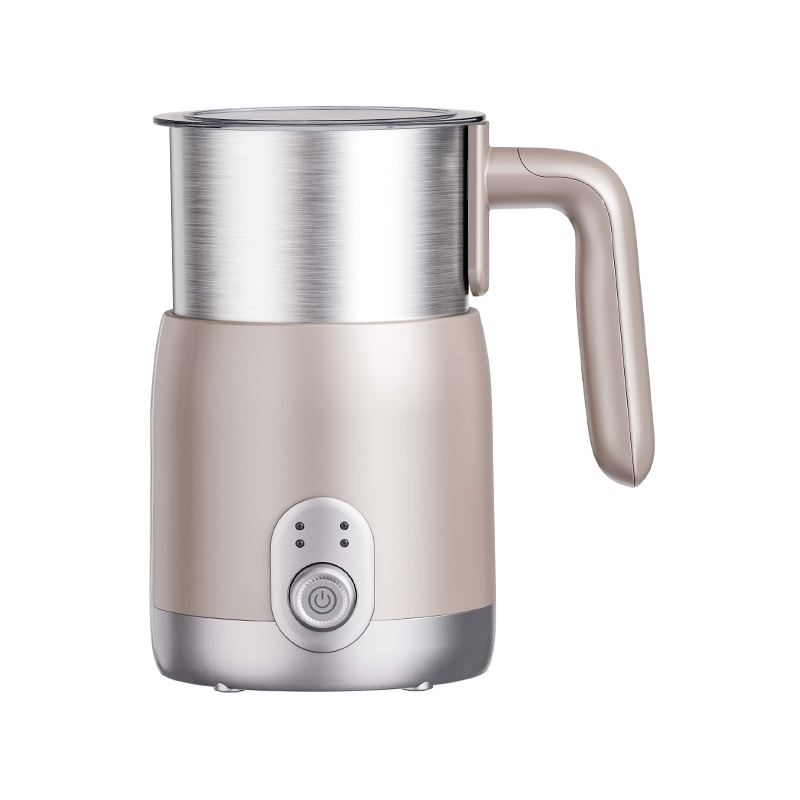 SEE more
SEE more
 SEE more
SEE more
 SEE more
SEE more
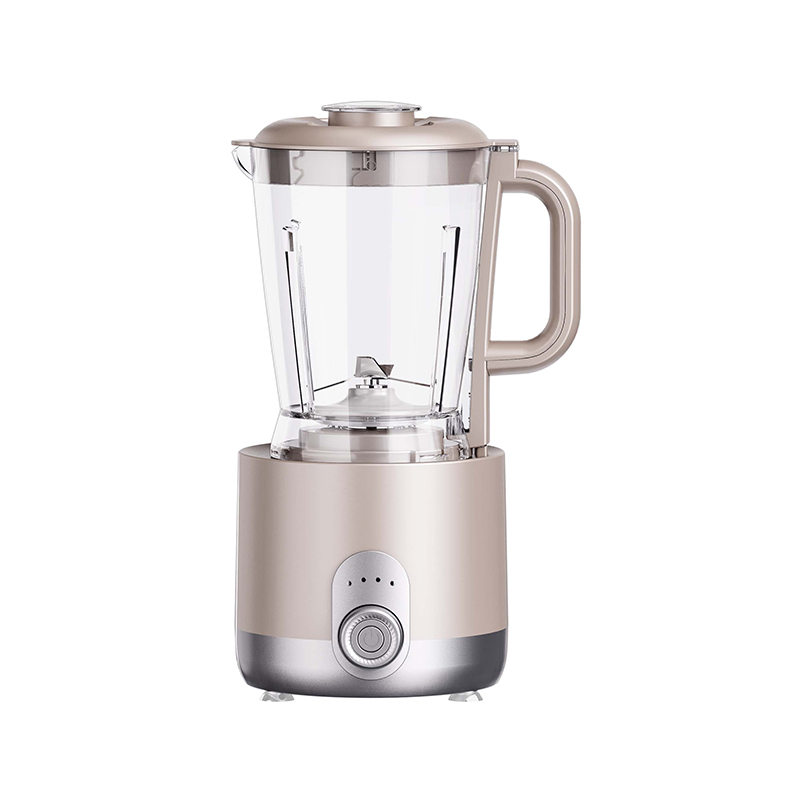 SEE more
SEE more
 SEE more
SEE more
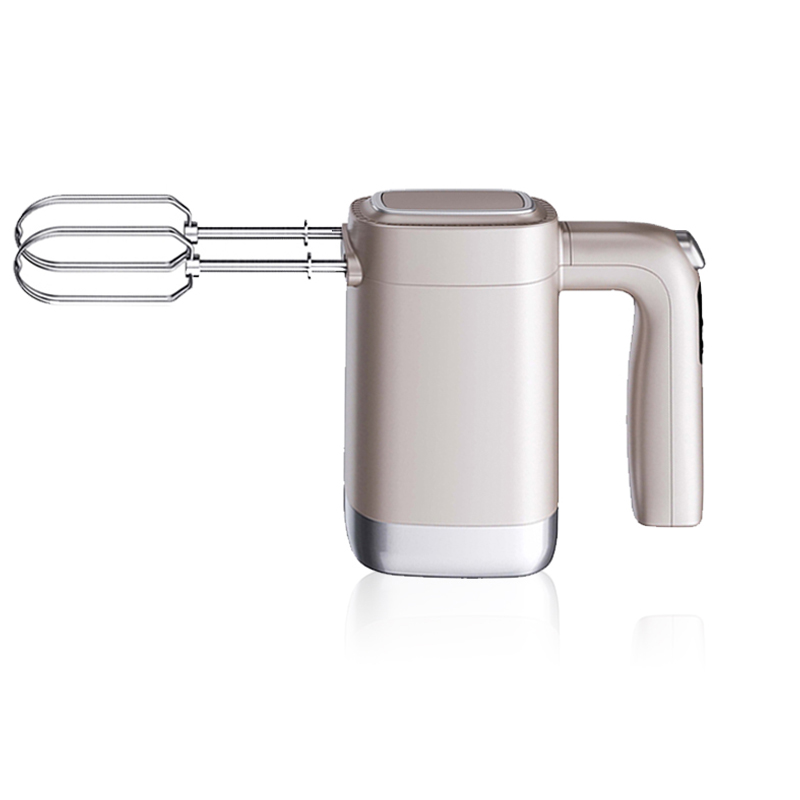 SEE more
SEE more
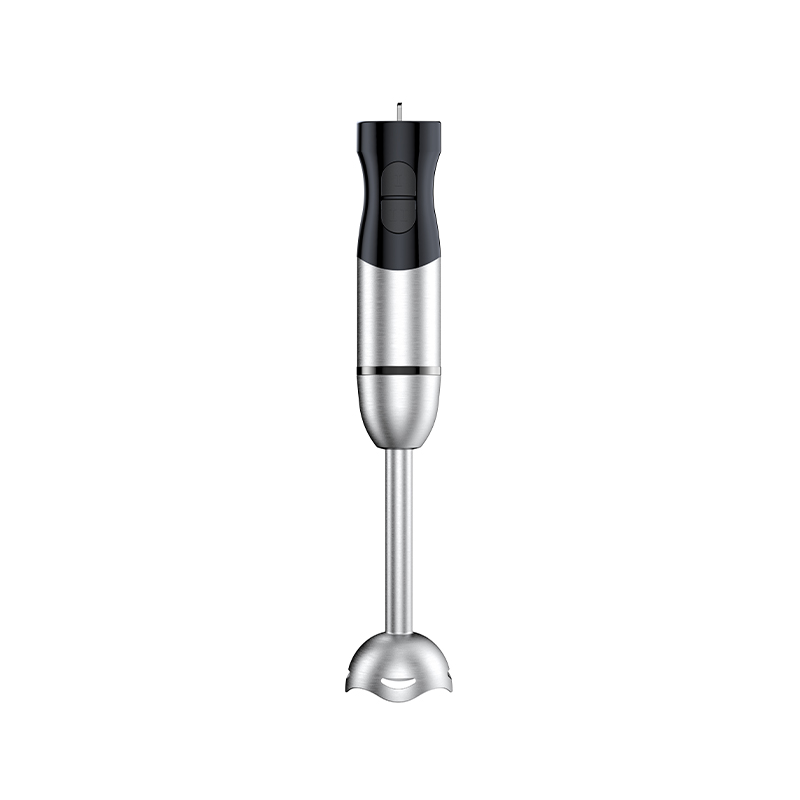 SEE more
SEE more
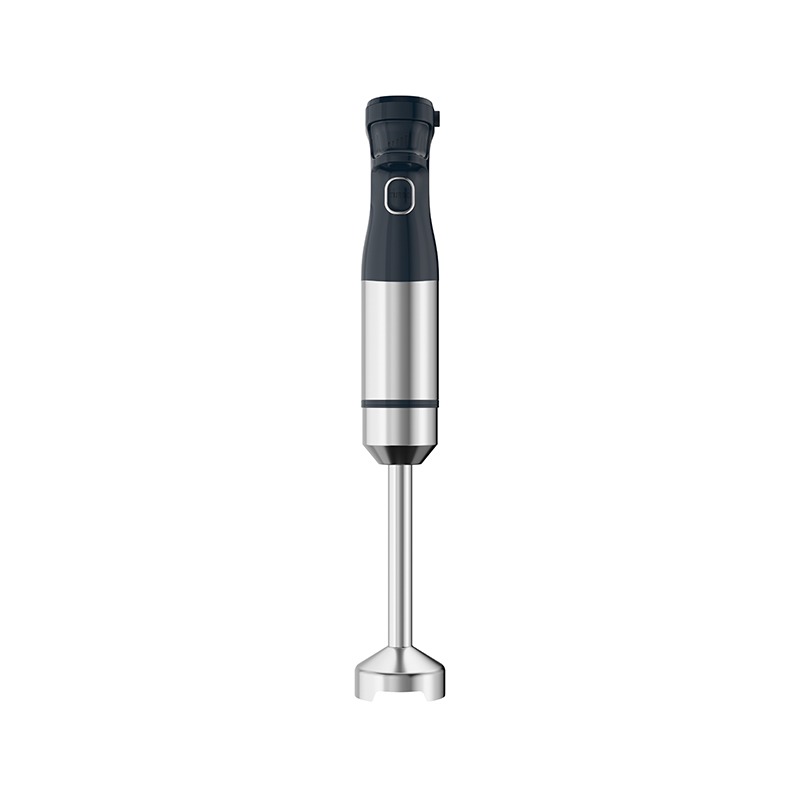 SEE more
SEE more
 SEE more
SEE more
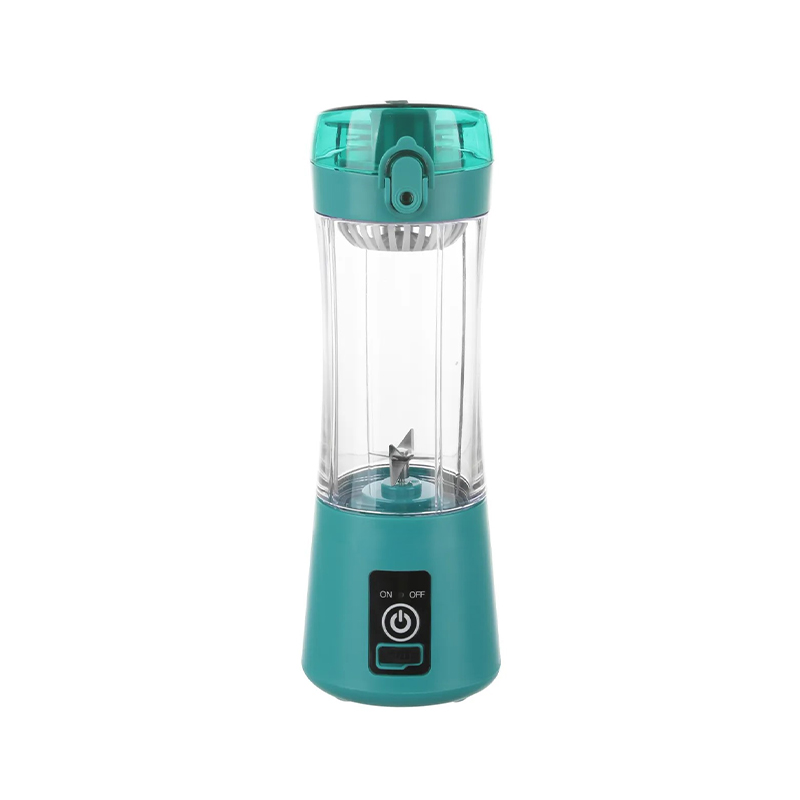 SEE more
SEE more
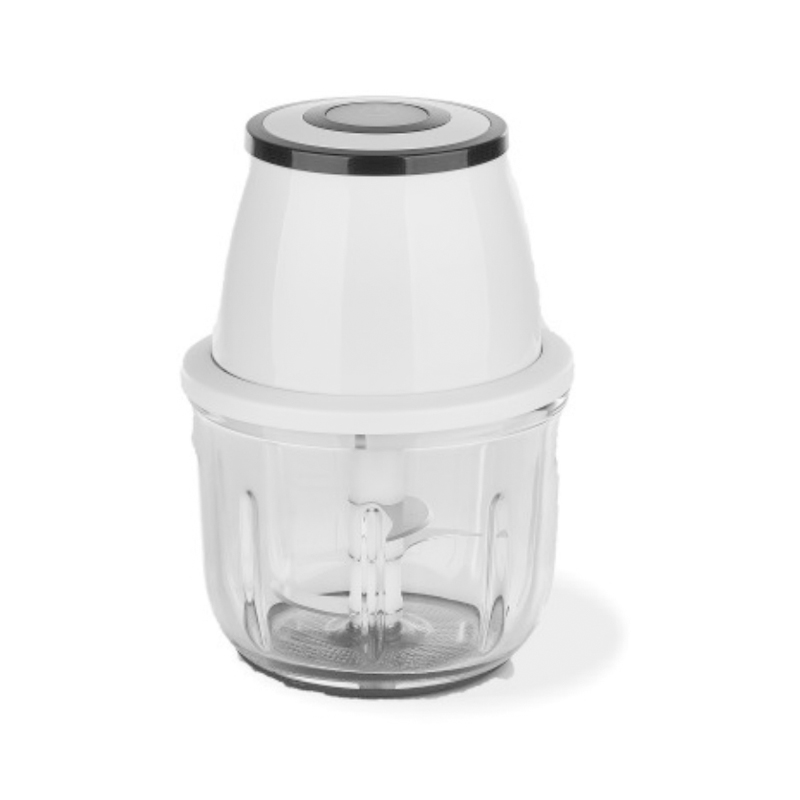 SEE more
SEE more
 SEE more
SEE more
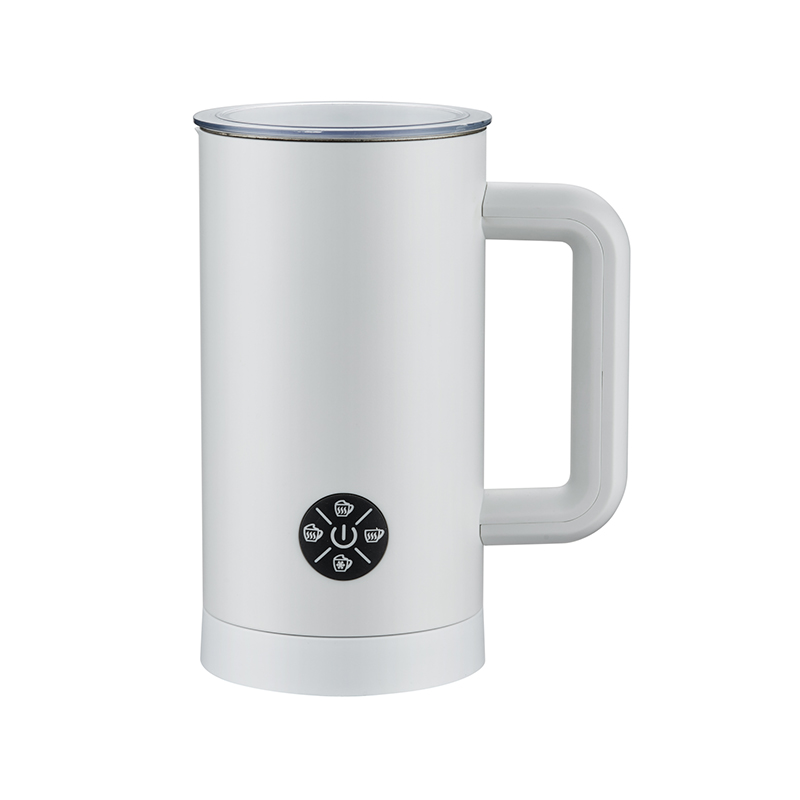 SEE more
SEE more
